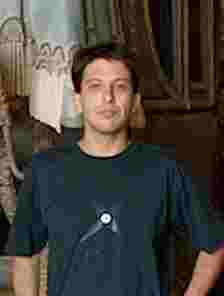Journal of Geography & Natural Disasters
Open Access
ISSN: 2167-0587
ISSN: 2167-0587

Giulio Iovine
Scientist at CNR-IRPI, National Research Council ? Institute of Research for the Geo-hydrologic Protection of Cosenza
Italy
• Graduated in Geological Sciences on 29 March 1988, with a thesis on “The activity of Vesuvius from 1631 to 1944: analysing the volcanic hazard in the Vesuvian area” - Supervisor: Prof. L. Lirer, Vote: 110/110 cum laude.
• Lecturer of “Applied Geology” at the University of Calabria from the academic year 2013-14, and from 2002-2003 to 2006-2007. Lecturer of Geotechnics in the academic year 2000-2001.
• Since 2003, Convener and Chairman of Scientific Sessions on the theme “modelling and simulation of dangerous phenomena”, and on “innovative techniques of hazard evaluation and mapping, and of risk mitigation”, at international Conferences/Congresses and national Conferences/Congresses.
• President of the “Area della Ricerca di Cosenza” of CNR, in 2012 and 2014. • Head of the Organizational Support Unit (U.O.S.) of Cosenza of CNR-IRPI, from 17.01.2011 to 16.06.2015.
Within the more general topic of “Landslide risk evaluation and mitigation”, the performed research activities concerned:
• Slope dynamics and morpho-evolution. Surveying, mapping and analysis (with GIS) of slope instability, at local and areal scale.
• Landslide activations and sinkholes triggered by either meteoric or seismic events. Effects of landslides in urbanized areas. Evaluation of hazard, susceptibility, vulnerability, and specific risk induced by slope-instability phenomena. Evaluation of conditions of imminent risk.
• Geomorphologic, morpho-neotectonic analyses seismic-induced landslides. Large-scale landslides, Deep-seated gravitational slope deformations, and tectono-gravitational phenomena, either at macro- or meso-scale. Effects on the environment induced by earthquakes.
• Modelling and simulation (mainly through cellular automata) of the spatial-temporal development of flow-type landslides (debris flows, earth flows, debris avalanches). Calibration and validation against real cases, also with parallel computational environment, through genetic algorithms. Sensitivity analyses through genetic algorithms. Susceptibility/hazard mapping. Essentially, studies of Applied Geology and Geomorphology in the field of gravitational slope evolution were performed, by dealing with issues of geo-hydrological defence and, more in general, of civil protection. The scientific interest migrated from issues of landslide recognition and mapping toward spatial quantitative analyses of morphologic-evolutive characteristics, of possible interferences with the urban environment, and triggering mechanisms (mainly meteoric and seismic). More recently, the relations among tectonic structures and gravitational deformations were investigated, as well as issues of modelling and simulation of landslide phenomena for susceptibility mapping, through innovative and automated techniques of analysis, useful also for managing phases of environmental crisis.